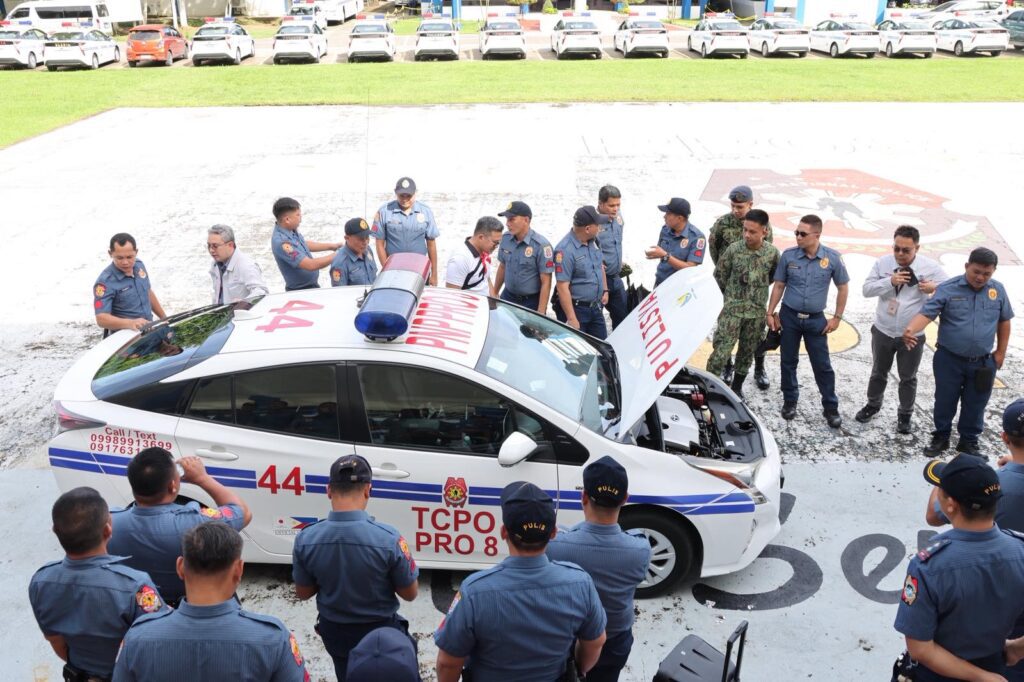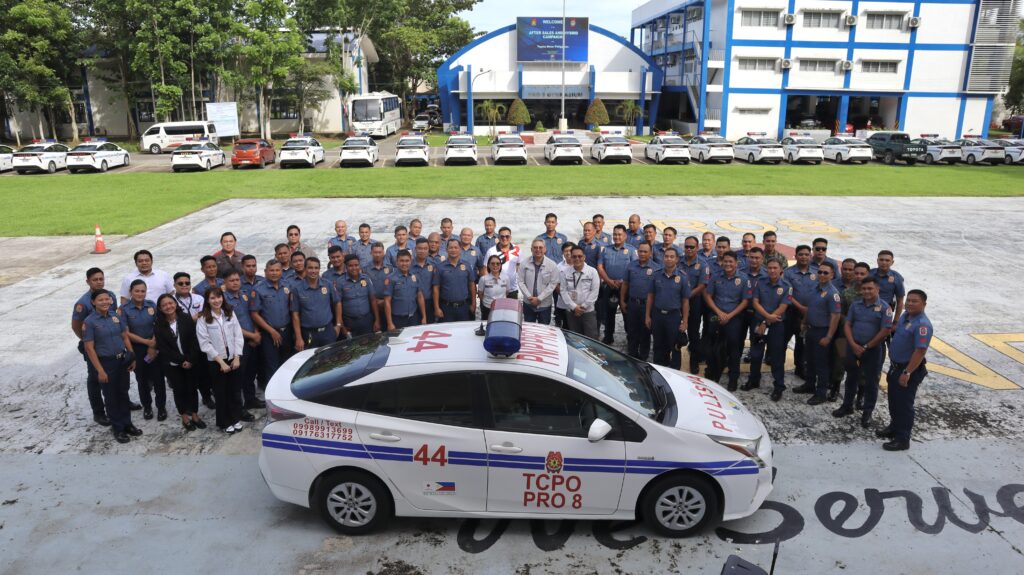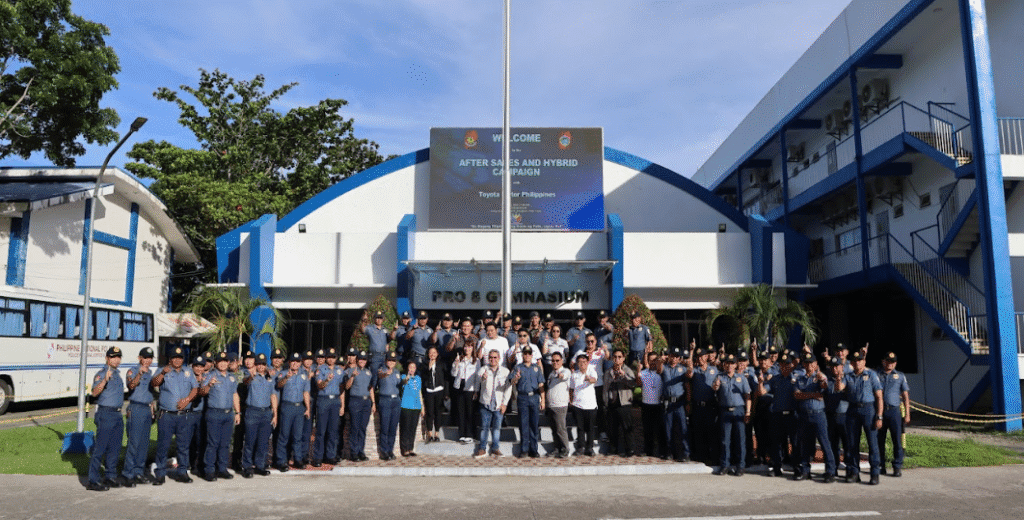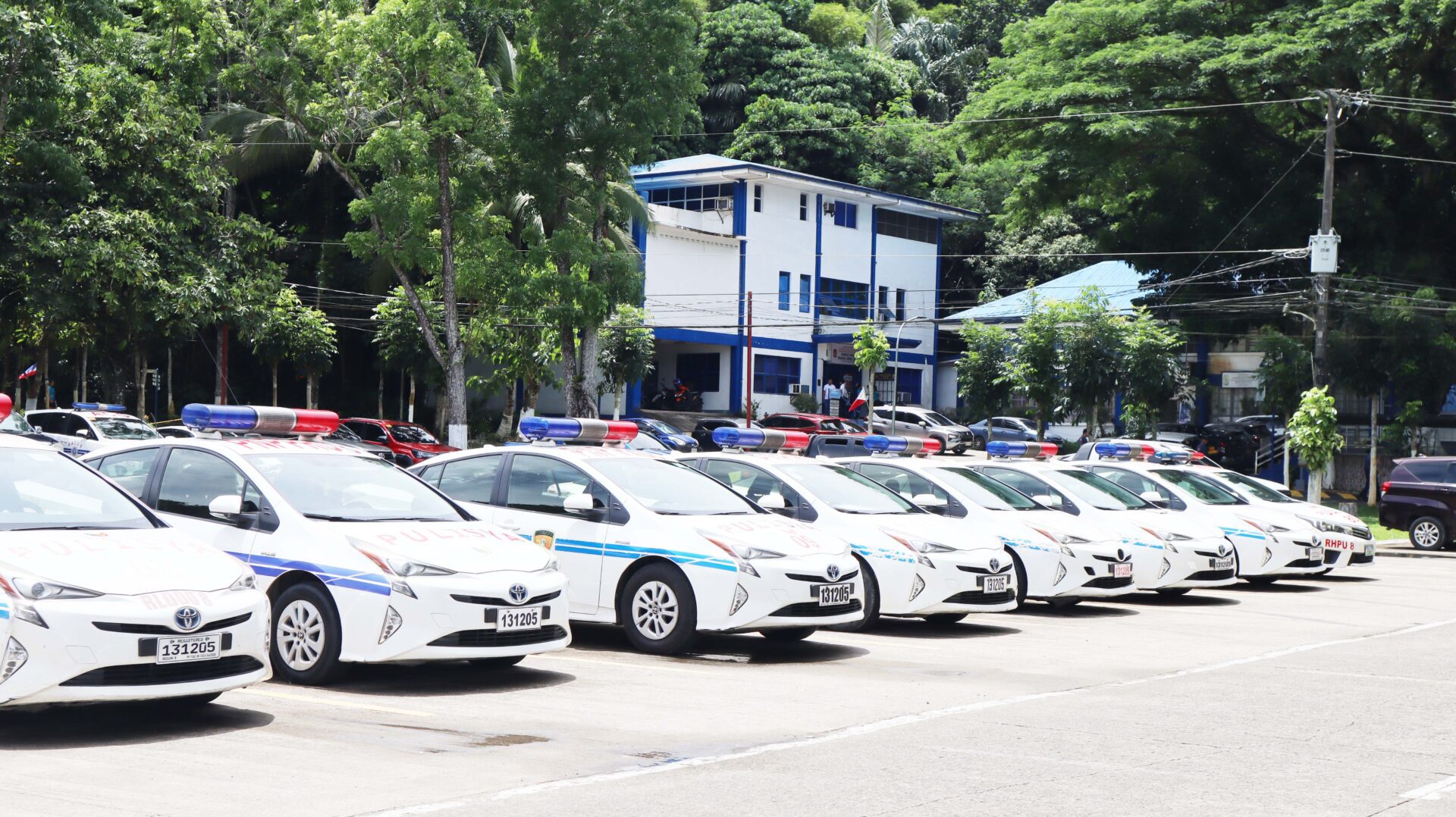Toyota Motor Philippines validates hybrid technology performance through extensive field study with PNP Tacloban patrol fleet
The Switch to Hybrids: Easier Than People Think
For many Filipino drivers, switching to hybrid technology raises concerns: Will it drive differently? What about maintenance costs? How long will the battery last? Will I run out of power midway?
The reality is much simpler than expected. The transition from gasoline to a Toyota Hybrid Electric Vehicle (HEV) is practically seamless. The only noticeable difference is fuel consumption—your gauge drops much more slowly. Where you visited the gas station twice weekly, you might now go just once.
This comes from Toyota’s proven hybrid technology that intelligently combines electric and gasoline power for exceptional fuel efficiency without compromising your familiar driving experience. While some drivers worry about battery life and maintenance, Toyota’s three decades of hybrid development have created systems engineered to outlast expectations.
The proof lies in Tacloban’s streets, where Toyota hybrids have been tested under conditions far more demanding than most drivers will ever experience.

Putting Reliability to the Test
Toyota Motor Philippines (TMP) conducted a comprehensive Goyokiki activity in June—a Japanese practice of visiting customers to understand their experiences. The destination: Police Regional Office 8 in Tacloban, Leyte, where Toyota hybrids had been serving since 2017.
The subjects were forty-nine (49) Toyota Prius units provided to PNP Tacloban by the Government of Japan in 2017. Unlike pampered city cars or weekend vehicles, these were hard-working patrol cars operating around the clock, seven days a week, for eight years through Eastern Visayas’ challenging terrain.
Picture this: police officers responding to emergency calls at all hours, navigating city streets, rural roads, and coastal highways. Vehicles idling during surveillance operations, then suddenly accelerating to pursue suspects. Cars facing stop-and-go traffic, high-speed chases, and constant on-off cycling that stresses any powertrain.
Led by Mr. Marvin Gardiner, TMP Vice President for CSO Service Planning and Administration Department, with Mr. Dave Fenis, Service Manager of Toyota Tacloban, the team worked with PNP officers to evaluate performance under extreme conditions over eight years.

Impressive Findings
Of the 26 Prius units inspected, the average odometer reading was 193,000 kilometers—with the highest exceeding 300,000 kilometers. The average Filipino driver covers 20,000 to 25,000 kilometers yearly. These police vehicles accumulated 8-12 years of typical driving in just 8 years of service.
These 4th generation hybrid vehicles endured up to 300 kilometers daily through various conditions—humid coastal air, occasional typhoons, smooth highways, and pothole-riddled streets. Unlike regular commuter vehicles following predictable patterns, patrol cars face unpredictable demands: idling for hours during surveillance, sudden high-speed acceleration, constant stops during traffic enforcement, and extensive electrical system use.
Despite intensive use, technical evaluations revealed that engines, drivetrains, and hybrid batteries remained in excellent condition. The key metric: hybrid battery health checks measuring internal resistance—a performance indicator that deteriorates as batteries age.
The average internal resistance across all 26 vehicles measured just 0.020 Ohms. Fresh batteries typically start around this level, meaning these 8-year-old batteries performed like new units, with no degradation signs that skeptics worry about.

What the Officers Said
Validation came from officers who drove these vehicles daily—professionals whose lives depended on reliable transportation. Their honest assessment came from those who needed vehicles to perform when it mattered most.
“Quick response in Power Mode—very responsive,” they noted, emphasizing immediate acceleration for emergency responses. “No delay compared to traditional gasoline cars,” another confirmed, dispelling performance concerns in high-stakes scenarios.
Officers appreciated the quiet operation during surveillance operations where engine noise could compromise their position. The electric motor’s silent operation allowed more discrete approaches than conventional patrol cars.
They praised comfort and reliability for daily use. After 8-12 hours daily in these cars, the Prius maintained ergonomic advantages throughout years of heavy use. They highlighted low cost of ownership—critical for government agencies on tight budgets.
After eight years, batteries and transmissions remained in good condition (please mention that this is based from the technical assessment, and not from the officers). Maintenance scheduling stayed hassle-free, with no special procedures or extended downtime for hybrid-specific services. Routine maintenance felt like servicing any other Toyota.
PLTCOL RODERICK P CONDAG, Acting Chief, RLRDD of PNP, Police Regional Office 8 expressed the unit’s sentiment: “We sincerely thank TMP for going the extra mile to visit Tacloban and support our personnel. Toyota has never neglected us and continues to provide dependable aftersales service.”
Proven: Quality, Durability, Reliability
This field study validates what Toyota has demonstrated for three decades: hybrid technology isn’t just about fuel efficiency—it’s about building vehicles that perform reliably under tough conditions for years.
The Tacloban study represents something rare: genuine, unbiased, long-term data from users with no reason to exaggerate their experiences. Minor issues found were limited to undercarriage wear from rough roads—normal wear affecting any vehicle in similar conditions, not hybrid technology defects.
These were not city-driven vehicles babied in ideal conditions. These were driven hard by multiple users with varying driving styles, maintained on government schedules, and pushed to perform when failure wasn’t an option.
The implications extend beyond police work. If Toyota hybrids thrive in demanding law enforcement—with unpredictable schedules, high-stress situations, and intensive use—they excel in daily commuting, family trips, and business travel.
The Toyota Choice represents a commitment backed by proven Quality, Durability, and Reliability (QDR). Whether responding to emergencies at 3 AM, covering multiple provinces for work, or taking weekend family trips, Toyota’s hybrid technology delivers dependable performance, day after day.
When you choose a Toyota hybrid, you choose peace of mind from 30 years of innovation, millions of satisfied customers worldwide, and proof that these systems are built to last.
Ready to experience Toyota’s proven hybrid reliability? Visit your nearest Toyota dealer and discover why millions of drivers worldwide have made The Toyota Choice.





